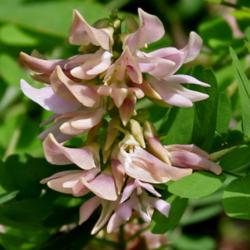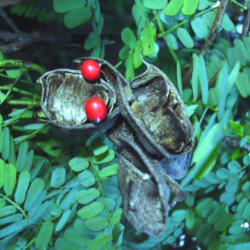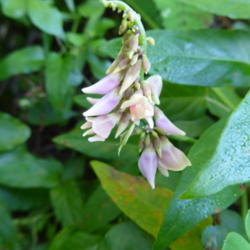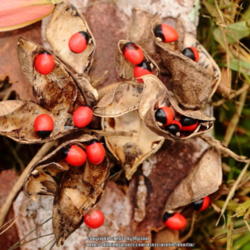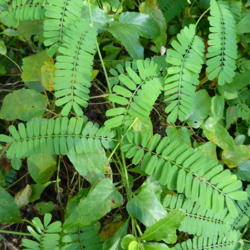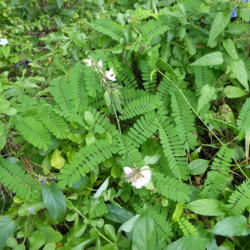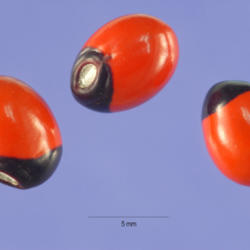| Plant Habit: | Vine |
| Life cycle: | Perennial |
| Sun Requirements: | Full Sun to Partial Shade |
| Water Preferences: | Mesic |
| Soil pH Preferences: | Slightly acid (6.1 – 6.5) Neutral (6.6 – 7.3) Slightly alkaline (7.4 – 7.8) |
| Minimum cold hardiness: | Zone 8a -12.2 °C (10 °F) to -9.4 °C (15 °F) |
| Maximum recommended zone: | Zone 11 |
| Plant Height: | 6 to 20 feet |
| Leaves: | Deciduous |
| Fruit: | Edible to birds Dehiscent Other: 1 1/2 to 2 inch oblong flat pod containing 3 to 8 shiny hard, bright red seeds with black spot. Seeds are extremely poisonous except to birds. |
| Flowers: | Showy |
| Flower Color: | Pink White Other: Pale white to violet-pink |
| Bloom Size: | Under 1" |
| Flower Time: | Summer |
| Underground structures: | Taproot |
| Uses: | Will Naturalize |
| Wildlife Attractant: | Birds |
| Resistances: | Humidity tolerant |
| Toxicity: | Fruit is poisonous Other: Ingestion of a single seed is said to cause death in humans and animals. |
